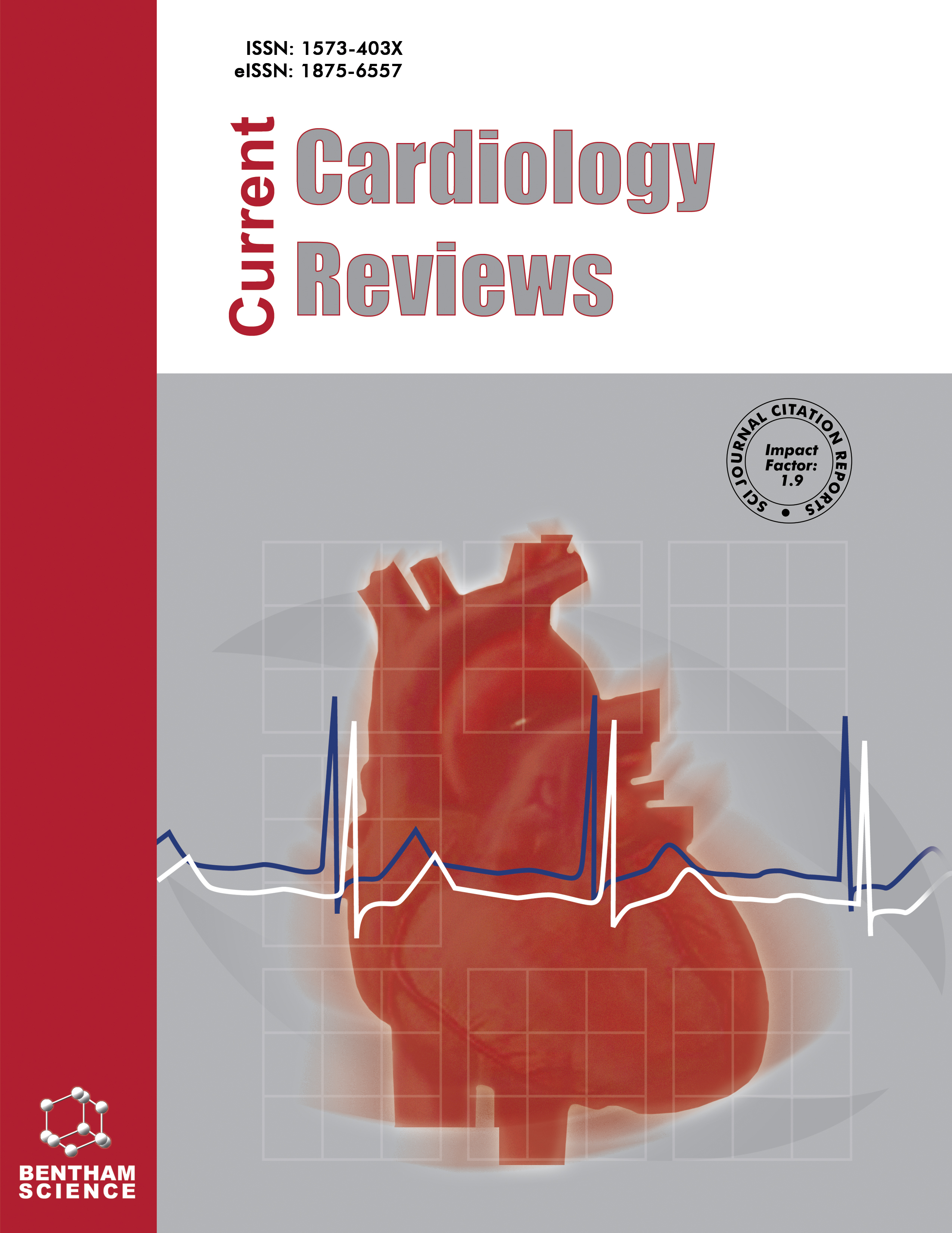- Home
- A-Z Publications
- Current Cardiology Reviews
- Previous Issues
- Volume 18, Issue 4, 2022
Current Cardiology Reviews - Volume 18, Issue 4, 2022
Volume 18, Issue 4, 2022
-
-
Perspective on ‘Phase V’ or Logistics and Regression as Logical Progression for Community Heart Failure Triage
More LessAuthors: Atro Azad, Fahad Hanna, Malcolm Battersby, Pupalan Iyngkaran and Maximilian P. de CourtenCongestive Heart Filur is an epidemic and its trajectory apppears to be escaling. Undoubtly tremendous gains have seen improvement in life expectancy and quality of life, however, hospital readmissions, resource utilization and health system cost continue to create challenges. In this short perspective, we raise the prospect of extending the research phases the community and real world setting. Logistic have supporte Read More
-
-
-
Defining Vulnerable Patients with Heart Failure: Opportunistic Lessons from Covid-19
More LessCongestive Heart Failure is a chronic disease that can be associated with poor outcomes. Some patients are more vulnerable, while others who are vulnerable appear absent or silent to health services. COVID-19 pandemic is a good opportunity to explore this important area. This review focuses on chronic disease, heart failure and those who require greater consideration.
-
-
-
Novel Non-pharmaceutical Advancements in Heart Failure Management: The Emerging Role of Technology
More LessAuthors: Mark T. Nolan, Neville Tan and Christopher J. NeilPurpose of Review: To summarise and discuss the implications of recent technological advances in heart failure care. Recent Findings: Heart failure remains a significant source of morbidity and mortality in the US population despite multiple classes of approved pharmacological treatments. Novel cardiac devices and technologies may offer an opportunity to improve outcomes. Baroreflex Activation Therapy and Cardiac Cont Read More
-
-
-
Fetal Cardiac Function: Myocardial Performance Index
More LessAuthors: Mariana Oliveira, Joana P. Dias and Luís Guedes-MartinsThe Myocardial Performance Index (MPI) or Tei index, presented by Tei in 1995, is the ratio of the sum of the duration of the isovolumetric contraction time (ICT) and isovolumetric relaxation time (IRT) to the duration of the ejection time (ET). The Modified Myocardial Performance Index (Mod-MPI), proposed in 2005, is considered a reliable and useful tool in the study of fetal heart function in several conditions, such as gr Read More
-
-
-
Elucidating the Role of Cardiac Biomarkers in COVID-19: A Narrative Evaluation with Clinical Standpoints and a Pragmatic Approach for Therapeutics
More LessAuthors: Sukhes Mukherjee, Suman K. Ray, Ashwin Kotnis and Jagat R KanwarWith the incidence of the unabated spreading of the COVID-19 (coronavirus disease 2019) pandemic with an increase in heart-related complications in COVID-19 patients, laboratory investigations on general health and diseases of heart have greater importance. The production of a higher level of clots in the blood in COVID-19 individuals carries a high risk of severe lethal pneumonia, pulmonary embolism, or widespr Read More
-
-
-
Current Treatment Options for the Failing Fontan Circulation
More LessAuthors: Bart W. Driesen, Michiel Voskuil and Heynric B. GrotenhuisThe Fontan operation was introduced in 1968. For congenital malformations, where biventricular repair is unsuitable, the Fontan procedure has provided a long-term palliation strategy with improved outcomes compared to the initially developed procedures. Despite these improvements, several complications merely due to a failing Fontan circulation, including myocardial dysfunction, arrhythmias, increased pulmonary va Read More
-
-
-
Cryptogenic Stroke and Embolic Stroke of Undetermined Source: Risk Factors and Approaches for Detection of Atrial Fibrillation
More LessBackground: Stroke is a problem worldwide because of its high mortality and disability rates. Almost 90% of strokes are ischemic, and more than half of the deaths are caused by an ischemic stroke. Most risk factors for stroke are manageable so that it can be avoided with proper prevention. Despite the success in determining the causes of stroke in recent years, selectively, the “culprit” causing stroke remains unsolved. In suc Read More
-
-
-
Paradoxical Septal Motion after Uncomplicated Cardiac Surgery: A Consequence of Altered Regional Right Ventricular Contractile Patterns
More LessAuthors: Alfred Stanley, Constantine Athanasuleas and Navin NandaParoxysmal interventricular septal motion (PSM) is the movement of the septum toward the right ventricle (RV) during cardiac systole. It occurs frequently after uncomplicated cardiac surgery (CS), including coronary bypass (on-pump and off-pump), valve repair or replacement, and with all types of incisions (sternotomy or mini-thoracotomy). It sometimes resolves quickly but may persist for months or become permanent. G Read More
-
-
-
Review: HCN Channels in the Heart
More LessAuthors: Anne-Sophie Depuydt, Steve Peigneur and Jan TytgatPacemaker cells are the basis of rhythm in the heart. Cardiovascular diseases, and in particular, arrhythmias are a leading cause of hospital admissions and have been implicated as a cause of sudden death. The prevalence of people with arrhythmias will increase in the next years due to an increase in the ageing population and risk factors. The current therapies are limited, have a lot of side effects, and thus, are not ideal Read More
-
Volumes & issues
-
Volume 21 (2025)
-
Volume 20 (2024)
-
Volume 19 (2023)
-
Volume 18 (2022)
-
Volume 17 (2021)
-
Volume 16 (2020)
-
Volume 15 (2019)
-
Volume 14 (2018)
-
Volume 13 (2017)
-
Volume 12 (2016)
-
Volume 11 (2015)
-
Volume 10 (2014)
-
Volume 9 (2013)
-
Volume 8 (2012)
-
Volume 7 (2011)
-
Volume 6 (2010)
-
Volume 5 (2009)
-
Volume 4 (2008)
-
Volume 3 (2007)
-
Volume 2 (2006)
-
Volume 1 (2005)
Most Read This Month
Article
content/journals/ccr
Journal
10
5
false
en


